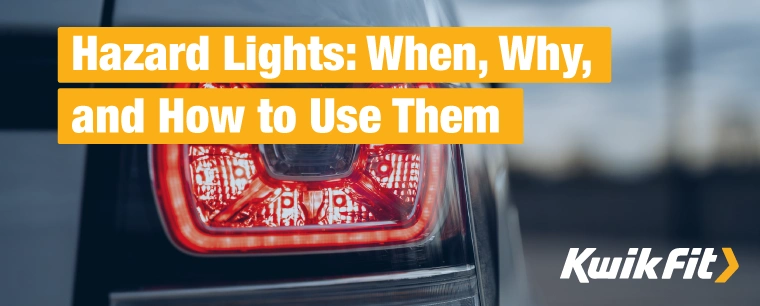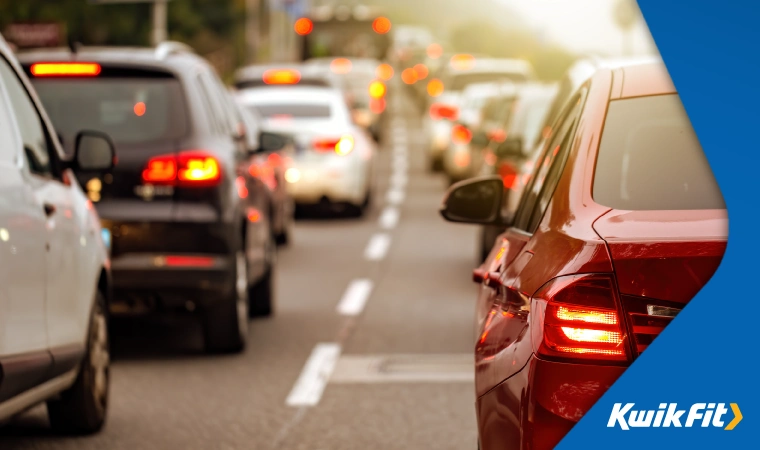Hazard Lights: When, Why, and How to Use Them
Jack Dreyer | Monday 18th December 2023 8:30am

The name ‘hazard lights’ affords us the luxury of telling us what they’re for – but what actually constitutes enough of a hazard to turn them on? And are there times where you shouldn’t turn them on?
Let’s find out.
What are hazard lights?
You’ve likely seen hazard lights used in different situations. You can clearly see when someone has their hazards on because the lights blink on and off – but these aren’t actually different lights from what’s already in the car.
Importantly, hazards don’t flash the headlights or brake lights on and off, only the indicator lights.
Instead of working from different bulbs, the “hazard light” button simply makes all the indicator lights on your car flash on and off at the same time. This can be a super effective way to signal that there’s danger but, used at the wrong times, can actually cause danger.
When should you use hazard lights?
The highway code gives quite clear guidance on when to use hazard lights. The short of it is that you should use them almost always only when stopped due to a hazard ahead. Usually, this is in instances where oncoming drivers wouldn’t expect a car to be stopped – such as in a road after an accident.
Not having the hazards turned on means drivers may assume your car is moving and therefore come dangerously close at a normal speed before realising that your car isn’t moving. In the worst cases, this can actually cause a potentially fatal pile-up of cars.
Using your hazards doesn’t justify dangerous or illegal parking. While it can be helpful for oncoming traffic to see clearly that you’ve parked somewhere you shouldn’t have (even temporarily), turning your hazards on won’t stop you getting a fine or points on your licence if stopped by a police officer or traffic warden.
Don’t keep hazard lights on in a queue

Even if you’re static due to a hazard ahead, you should only turn your hazard lights on if you’re the last car in a queue behind the hazard. If everyone turns their hazards on, then the result can be quite dazzling and result in drivers not being able to see ahead to potential changes in the situation.
It also makes it harder to see, for example, visual directions given by emergency personnel – such as instructions for everyone to pull over to let an ambulance through.
Don’t use hazard lights while driving
The highway code is also quite specific about not using hazard lights while moving as they can dazzle and confuse other drivers – which may then cause them to make errors in judgement that lead to accidents.
But there are a few instances when using your hazard lights is encouraged while driving. Usually, this is when you’re being towed and there’s danger ahead. Cars behind you won’t necessarily be able to see the hazard lights of the towing vehicle – so you can use your hazard lights to warn them.
But you should only turn them on long enough to ensure that cars behind have seen them and responded – you should then turn them off.
The only other time that using hazard lights is encouraged is during significantly reduced visibility & poor road conditions. For example, when there’s a queue of cars driving significantly slower on a motorway due to a heavy snowstorm, it’s not abnormal for a number of drivers to turn on their hazards to warn oncoming traffic to slow down.
Make sure your car’s winter ready
Your hazards are great at reducing danger on the roads, but they won’t work as well if any of your indicator bulbs are blown. Make sure your car’s winter ready with regular servicing and maintenance from the experts at your local Kwik Fit Centre.
Any facts, figures and prices shown in our blog articles are correct at time of publication.
Featured Articles
Is it Illegal to Drive With One Headlight?
Saturday 19th July 2025
Wondering if it’s illegal to drive with one headlight? Learn about the safety risks and penalties of illegal blown bulbs and why you should fix them promptly.
Air Con in EVs & Hybrids: Experts Answer Your Questions
Monday 30th June 2025
Does air con drain EV batteries? Can you use the air con while charging an electric car? Find out the answers to these questions & more from Kwik Fit’s experts.
Why Is Your Car Making a Noise? Fixes & Tips
Friday 13th June 2025
When your car starts making unexpected noises, it can certainly be quite disconcerting; it may be nothing to worry about, but here’s what you need to know.









